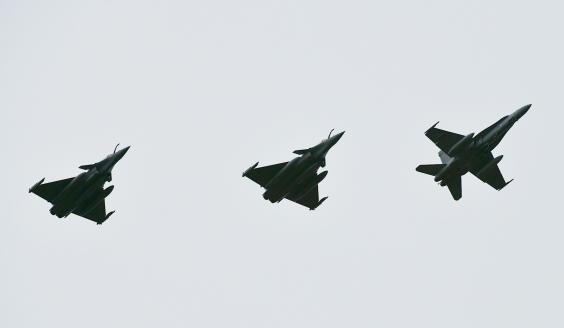Täppä 22 to involve F/A-18 Hornets and Rafales

Lapland Air Command’s Fighter Squadron 11 will arrange the Täppä 22 exercise at Rovaniemi and Oulunsalo air bases on 31 October – 4 November 2022. The exercise will involve Finnish F/A-18 Hornets and French Rafales.
Täppä is Lapland Air Command’s annual exercise focused especially on training the youngest F/A-18 Hornet fighter pilots. This year, in addition to the Finnish F/A-18s, the exercise will involve also two French Air and Space Force’s (Armée de l'Air et de l'Espace) Rafale fighters as part of the Finnish Defence Forces’ active exercising with international partners during the autumn.
– Täppä is an important exercise in the training program of our youngest fighter pilots. This year, thanks to the French participation, we can train also international cooperation and fly dissimilar air combat training. For the French personnel, the exercise provides an opportunity to familiarise themselves with the Finnish Air Force and the Arctic conditions in the High North, says Exercise Director, Commander of Fighter Squadron 11, Lieutenant Colonel Markku Vihersalo.
The Täppä 22 exercise will involve flight operations from the Rovaniemi and Oulunsalo air bases between 9 am and 10 pm from Monday to Thursday, and between 9 am and 2 pm on Friday. Eight Finnish F/A-18 Hornets and two French Rafales will take part in the exercise. The French detachment will operate out of Rovaniemi.
The air activity of the exercise will take place in the airspace bordering on Rovaniemi, Ivalo, Kuusamo, Kajaani and Oulu, as well as over the Bothnian Bay. Supersonic flights will be flown only over the sea. Noise abatement procedures are followed in the vicinity of the air bases, whenever feasible. During the exercise, the aircraft will deploy countermeasures such as flares and chaff. Flares may be seen as momentary bright spots of light in the sky, and chaff may cause false echoes on weather radar.



